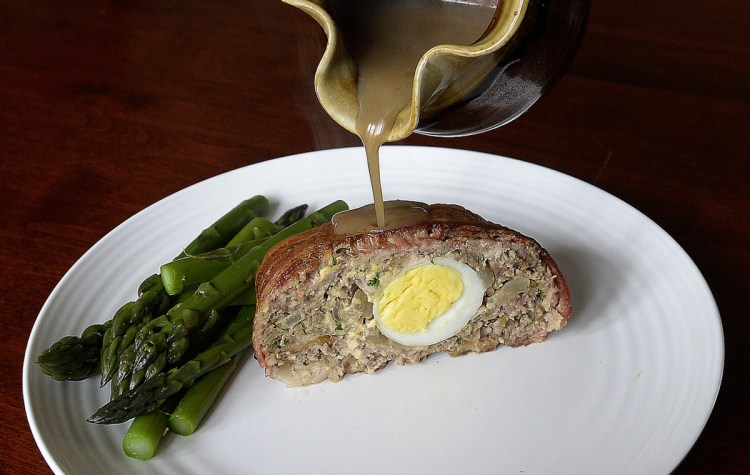There are over 8,000 breeds of livestock worldwide. Add it up, and you’ve got a plethora of cows, pigs, sheep and poultry being raised to feed humans. But according to The Livestock Conservancy, a nonprofit organization that works to protect genetic diversity in agriculture, 21 percent of those breeds are in danger of extinction because industrialized agriculture values the fast-growing breeds that yield the most meat over anything else.
While the narrow focus brings consistent steaks, chops and drumsticks to the supermarket, it also limits the earth’s overall biodiversity, which, in turn, leaves livestock, and the agricultural system as a whole, more vulnerable to disease and pestilence. The Livestock Conservancy works to keep hundreds of breeds like Florida Cracker cattle, Ossabaw Island pigs, Barbados Blackbelly sheep, Spitzhauben chickens and Dutch Hookbill ducks from going the way of the woolly mammoth. Local farmers who choose to raise and consumers who opt to seek out heritage beef, pork, lamb and poultry both play a part in the preservation of heritage breeds.
Still, sometimes in an effort to buy heritage meat and heirloom vegetables, we miss the fact that cross-breeding plants and animals also plays into creating a more sustainable food system. Eating meat from mixed-breed animals raised by local farmers is also a sustainable way consume your share of local animal protein. In fact, if you engage a local farmer in a conversation about why they cross one breed with another, you’ll likely get some good information on how those crosses help make sustainable meat more affordable for both farmer and consumer.

Christine Burns Rudalevige stirs the gravy for her Mixed-Breed Meatloaf. Staff photo by Shawn Patrick Ouellette
When I toured North Star Sheep Farm in Windham, owner Lisa Webster explained how her husband Phillip cross-breeds several varieties of sheep to yield animals that thrive on their land and provide the quality of meat Maine chefs and lamb lovers want at a price that sustains everyone’s bottom line. The Websters use Suffolk and Hampshires for size and meat quality; North Country Cheviots and Polypays for vigor and longevity; and, Icelandics and Scottish Blackface for their ability to thrive in the harsh climate of Maine. “When you cross breed for these traits you will get the best of each for productive sheep, with great carcasses and the ability to live many years in our climate,” Lisa Webster said. The Websters maintain pure lines of each breed so they can continue to cross-breed and get the same desirable results.
Cross-breeding is not a new phenomenon in agriculture, says MOFGA livestock specialist Diane Schivera. “Farmers do it for reasons ranging from parasite resistance to milk production to physical features that they like to look at,” she said.
Joseph Murray of Dragonfly Cove Farm in Dresden crosses breeds so that his herd of 70 goats can be good at many things and master of none. In an effort to create diversified cash flow to sustain his farm, Murray wanted goats that could produce milk, meat and fiber. So he’s brought in Boers and Kikos for meat quality, Nubians for size, Saanens for milk, Spanish for high and tight udders (so the kids can stand to eat) and Alpines for disposition. Murray has proof his cross-breeding practices are working. In 2005, a 100-pound carcass yielded 35 pounds of meat on his farm. In 2016, post cross-breeding, the yield grew to 44 pounds of meat product per 100 pounds of carcass.
Abby Sadauckas of the certified organic Apple Creek Farm in Bowdoinham raises cows, goats, chickens and turkeys. Sadauckas has tried both heritage breeds and hybrids. And every one of those experiments has resulted in either a good story or a good product that allows her to keep selling local meats to satisfied eaters. She tried raising heritage breed Bronze turkeys, but that proved unsustainable because the hatchlings cost $15 each before she so much as fed them one bite. Also, she soon realized that America’s penchant for big-breasted chickens made Cornish Crosses a better bet; now she raises this conventional breed on pasture despite its reputation for being a couch potato. She splits ownership of a British White Park bull with another local farmer because she raises cattle on pasture and that breed is white, so won’t get as hot standing in the sun as, say, Black Angus.
What breeds does your preferred livestock farmer raise? It’s a question worth asking.
ABOUT THE WRITER
CHRISTINE BURNS RUDALEVIGE is a food writer, recipe developer and tester, and cooking teacher in Brunswick, and the author of “Green Plate Special,” a cookbook from Islandport based on these columns. She can be contacted at cburns1227@gmail.com.
CORRECTION: This story was updated at 6:15 p.m. Wednesday, May 23 to correct the organic designations of Apple Creek and North Star farms.
Copy the Story LinkSend questions/comments to the editors.



Success. Please wait for the page to reload. If the page does not reload within 5 seconds, please refresh the page.
Enter your email and password to access comments.
Hi, to comment on stories you must . This profile is in addition to your subscription and website login.
Already have a commenting profile? .
Invalid username/password.
Please check your email to confirm and complete your registration.
Only subscribers are eligible to post comments. Please subscribe or login first for digital access. Here’s why.
Use the form below to reset your password. When you've submitted your account email, we will send an email with a reset code.